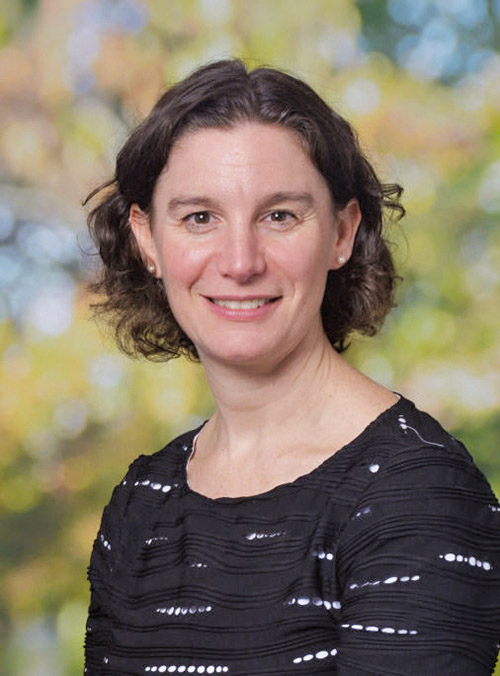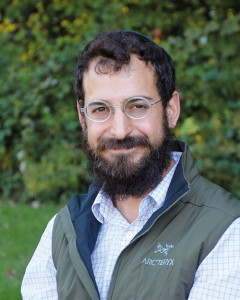
It was one of those rare teaching moments, and Rabbi Joshua Rosenfeld, director of Judaic studies at the Bi-Cultural Hebrew Academy of Connecticut, recognized the opportunity and seized upon it.
Here’s how it happened.
On Sunday, Jan. 8, Rachel Haron, director of curriculum and staff development at the day school, unfortunately lost her father, Larry Rezak, z”l after a long illness. Rezak was one of the early supporters of a Jewish day school in Stamford and worked tirelessly on its behalf. Most recently, he attended school sports activities and cheered for the students, carpooled for school events, and regularly gave out Tootsie Pops to the children at the school. Each year he spoke to the students on Veteran’s Day, recounting his days while serving in the military.

After the funeral, Haron sat shiva along with her mother and other family members at her parents’ home in Stamford.
Heron’s youngest daughter, Hannah, a sixth-grade student at Bi-Cultural, was extremely close with her grandfather. Living in the same town as her grandparents was and remains a special blessing, and Hannah saw her grandfather multiple times each week, including every week for Shabbat dinner.
Rabbi Rosenfeld thought that this was a perfect opportunity to teach Hannah and the other sixth-grade students about some of the laws of mourning. He approached all of the parents of the class and asked them for permission for the school to take the entire sixth grade to pay a shiva call to Rachel and her family. No one objected.
It might seem to some people that a class trip to pay a shiva call is an unusual activity. Rabbi Rosenfeld, however, used this opportunity to maximize its educational value.
He explained to the students some of the customs of mourning: sitting on a low chair, tearing one’s garment, and having friends and relatives visit the mourner and speak about the person who died in order to help comfort the person sitting shiva. The youngsters learned about the source for the commandment in the Torah for comforting the mourner in advance of the visit, and were prepared to fulfill the mitzvah during the shiva call, in a safe and nurturing environment.
At the shiva home, many of the children shared memories of Rachel’s father, as they truly felt they had lost a good friend. They all recited the “Hamakom yenachem” phrase before leaving, and also learned the Sephardic custom of reciting three words: “Min hashamayim tenuchamu.”
Throughout the week, various individuals sponsored learning of mishnayot in memory of Rachel’s father, and the entire school community prayed with him in mind each day.
On the surface, this sounds like it might be a lot for a sixth grader to handle. But kids are often more resilient than we think, and Rachel and her family not only deeply appreciated the visit, but it was also extremely meaningful to the youngsters. One woman, who just happened to be in attendance at the time the students were there, told Rachel that it was the most meaningful shiva visit she ever experienced.
What are the takeaways from this extraordinary story? I think there are a couple of important lessons here.
First, we tend to shelter our children from discussions about death and I’m not sure this is always a good idea. Of course, there are age-appropriate ways to discuss the subject, and I’m not advocating that we share intimate details about death and dying with a five-year-old child. However, sixth graders are certainly quite capable of making a shiva visit that’s meaningful, especially for someone they know.
When I was young, parents never took their older children to a shiva house. (I think I might have been in college before I paid my first shiva call.) However, I don’t think there is any reason why a child who is 12 or older cannot accompany his parents to a shiva house to help comfort a mourner that the family knows. It is a wonderful opportunity to educate our youngsters around a life cycle event that they will eventually have to experience. Why don’t we consider doing this more often?
I’d go even further with high school students. I believe that every yeshiva high school should incorporate a short course in the curriculum explaining what a tahara is, how it is actually performed, and a discussion about other Jewish burial practices. I am involved in our local chevra kadisha, and it wasn’t until I was married and got involved in our chevra kadisha that I actually learned about doing a tahara. Perhaps a course in high school would encourage others to join a chevra kadisha once they are older, thus allowing more people to participate in this important mitzvah.
The second lesson from this story is the importance of capitalizing on teaching moments. As parents, grandparents, teachers, and administrators, we occasionally experience an event at home or at school that begs us to educate our children. Do we take advantage of the opportunity, as Rabbi Rosenfeld did, and utilize the experience as a teaching moment? Or do we shy away from any action?
Teaching moments such as what occurred at Bi-Cultural don’t happen very often, and it’s imperative that when they do present themselves, we do our best to use the experience to our best advantage.
What will you do when that teaching moment suddenly arrives?
Michael Feldstein is a contributing editor for The Jewish Link. He owns his own marketing consulting firm, MGF Marketing, and can be reached at [email protected].










